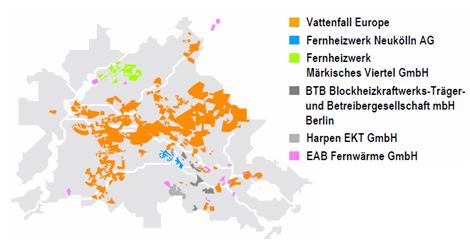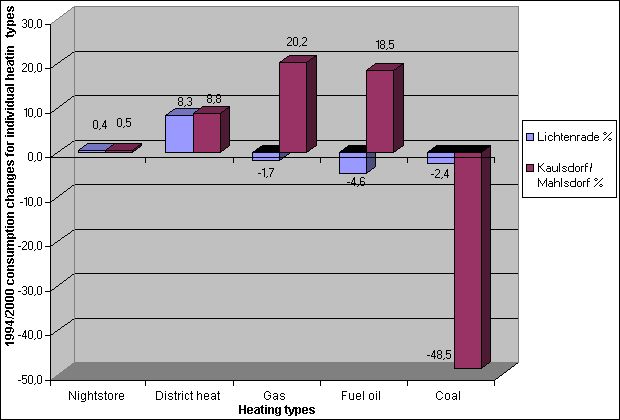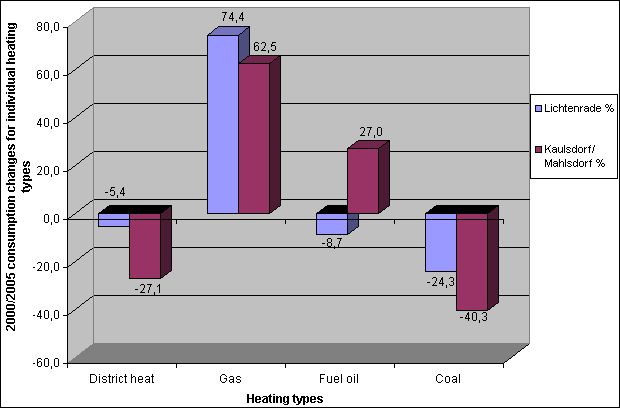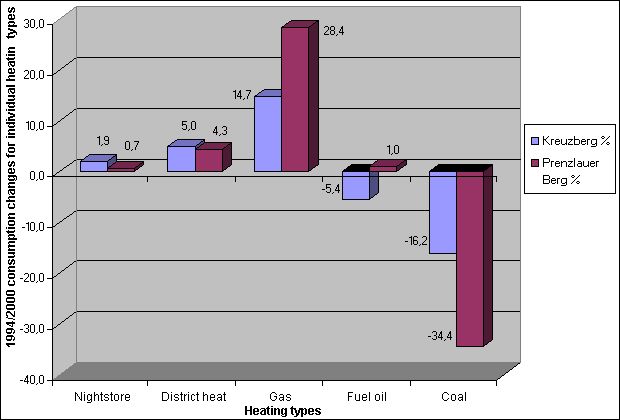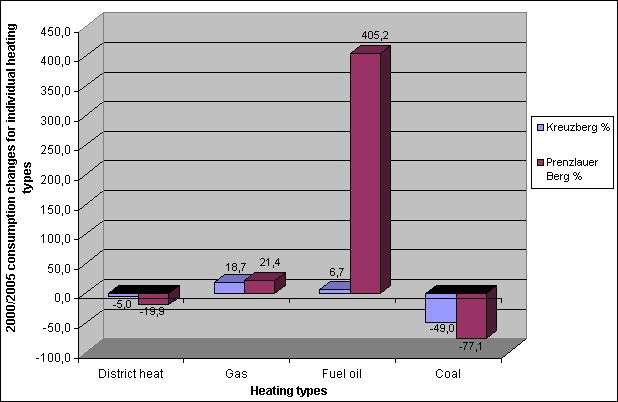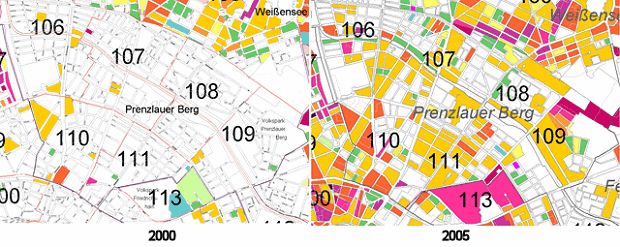The graphical representation of the assessed structural heating data for Berlin’s residential and commercial spaces provides a useful tool for analyzing both larger-scale contiguous areas and self-contained sites.
Map 08.01 Building Heating Supply Areas
Fuel consumption in buildings greatly depends on their structural layout and geographical location. Marked differences can be noted between the city’s 12 boroughs; usage of the different energy carriers varies greatly depending on the boroughs’ respective locations within the city (cf. fig. 3).
Map 08.01.1 District Heating Supply Areas reflects very clearly the local proximity of heating plants and heating power plants to their respective supply areas. The largest share of district heating in Berlin is provided by Vattenfall Europe, with a network spanning approx. 1,300 km. About 2000 of the 6,691 blocks with access to a district heating network also make use of this heating option (more than 50 percent). In newly developed and existing outskirt residential areas such as Hohenschönhausen, Marzahn or Märkisches Viertel, many large housing estates are supplied exclusively with district heat. Altogether, the map demonstrates Berlin’s leading position in Europe for the supply of district heating. Since 1995, many of the potential candidates for district heat connection – particularly coal-heated old buildings bordering existing district-heat-supplied areas – have been integrated into the networks. Figure 8 shows an overview of the spatial distribution of district-heat-supplied areas.

